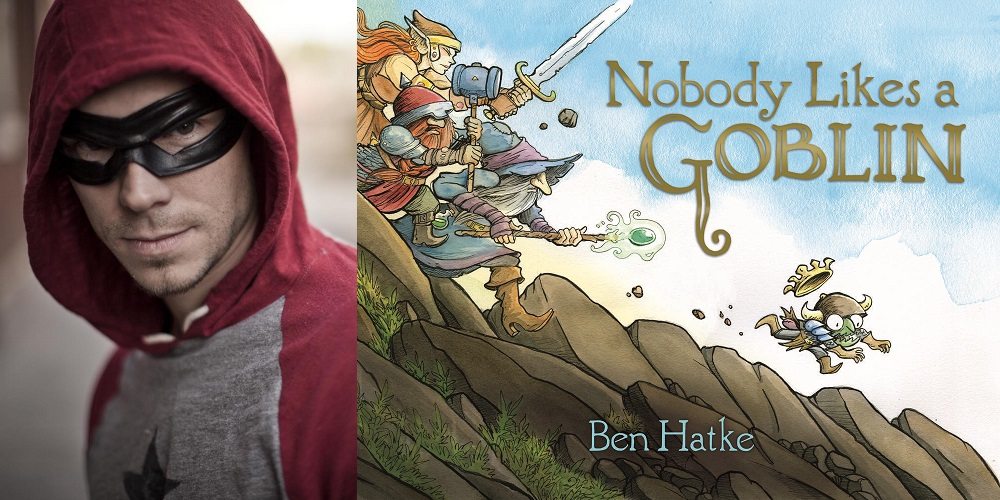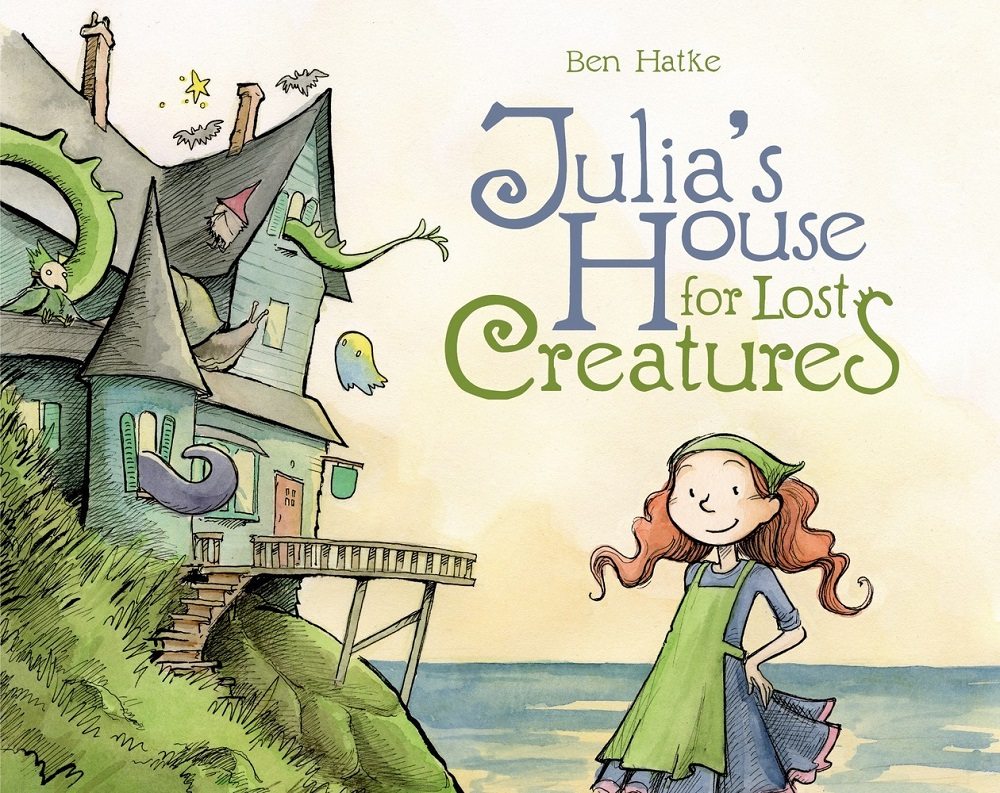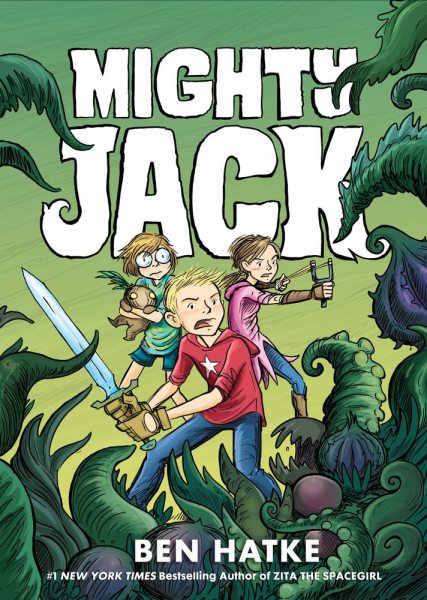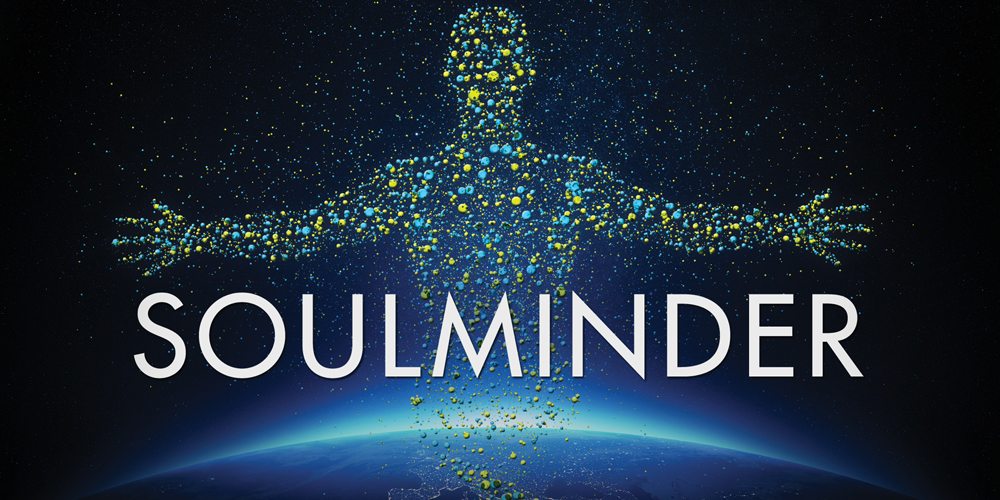
Ben Hatke should be a familiar name to regular GeekDad readers. We generally gush about his latest book and then shout from the rooftops how awesome he and his books are. Well, we’re at it again. Ben’s newest book is the utterly charming Nobody Likes a Goblin. It follows the success of his (and First Second Books’) first picture book, Julia’s House for Lost Creatures.
In Goblin, Ben creates yet another misfit creature who will tug at your heartstrings and make you fall instantly in love with the book. But that should come as no great surprise. His gorgeous art and amazing character designs nearly always win over readers at first sight. In addition to being a lovely story with an even lovelier message, Nobody Likes a Goblin also plays on some classic character tropes that are obviously second nature to a role-player like Hatke.
I recently had a chance to chat with Ben about his new book, his history with both female protagonists and imaginary creatures, and what’s coming next.
GeekDad: From Zita to Julia to Little Robot, you’re kind of known for your young female protagonists and characters. Is that by design?
Ben Hatke: I try to keep that kind of thing pretty unconscious. But I did grow up with two sisters, and now I have a small horde of inspiring daughters, so I suppose it’s to be expected that many of the protagonists in my stories would reflect that. I have, from time to time, drawn the characters from my different books all together in a group, and I sometimes ask how it could be a more diverse group. But I don’t think it’s too bad so far. The main thing is to find the right character for the story you’re telling, and that can be a long process.

GD: Anyone who’s followed your career also knows that you’re fairly obsessed with drawing creatures. That really shines through in Julia’s House for Lost Creatures, but it’s also very much on display in Nobody Likes a Goblin. What is it about creatures that you find so compelling?
BH: Oh, creatures, you are so fun to draw. I love discovering personalities in unlikely shapes and textures.
GD: Goblins seem to be one of those things that are relatively timeless. They always resonate with kids and are popular. Why do you think this is the case?
BH: Oh, I think goblins have always been with us, in some form, from our earliest stories. And in modern fantasy they fill the thankless role of being at (or very near) the bottom of the fantasy antagonist food chain. It’s a thankless role, but the poor goblins keep at it, day after day.
GD: What’s the hardest part about creating a goblin who’s relatable and tugs on your heartstrings?
BH: Of all the challenges in creating this book, I think that was one of the easier ones. Goblin is so little and gross and alone, how can we not relate to him? The secret is that we’re all little and gross and alone sometimes. I hate to set down a moral or a message to any of my stories, but if I were to do such a thing it would be something like, “Even in those wonderful times that you don’t feel so little and gross and alone, remember that a lot of people do feel that way, right now, and love them.”

GD: Do you ever get stumped for new character designs when it comes to creatures and robots, which you’ve drawn so many of?
BH: I find that, like so many things, if you just put in the time everything will eventually develop. With characters, I sometimes have to just doodle them over and over, doing different things, in my notebooks. Slowly, though this process, each character becomes more solid. You get to know them, both in personality and how they look.
GD: Your books are obviously very visual, and I would say that a majority of your storytelling is actually in the pictures—more so than in other picture books. How do you approach a new book and plot out the story? Do the visuals or the words come first?
BH: Most of my stories start with both a text file and a sketchbook. The text file is for story outlines, organization of events. The sketchbook is there to catch ideas as they fall out of your head. Sometimes this is character designs or settings or scraps of dialogue. It’s something like a left brain, right brain thing.
GD: Do you turn to your daughters for feedback while working on a story? Have you ever made changes to a book based on what they say?
BH: My daughters are very helpful. They have checked in on me fairly regularly for most of my projects. They watch them develop, ask questions, give me little bits of gentle feedback. When I have a story outline–I mean all the events of the plot worked out, I usually just tell the story aloud over dinner or something and that ends up being the first major milestone of feedback that I get.
GD: Your next book, Mighty Jack, is a twist on the Jack and the Beanstalk story. There have been a lot of retellings of that story over the years. Do you have a favorite version?
BH: There’s a version in English Fairy Tales by Flora Annie Steel (with Arthur Rackham illustrations!) that I like because it starts like this:
“A long time ago, when most of the world was young and folk did what they liked because all things were good, there lived a boy called Jack.”




